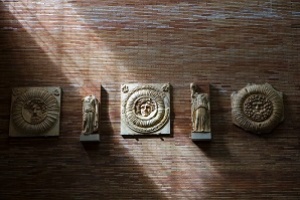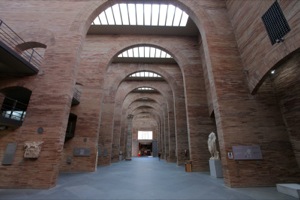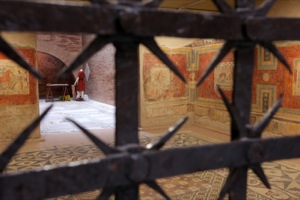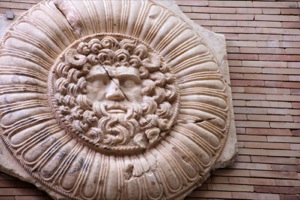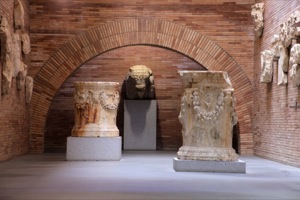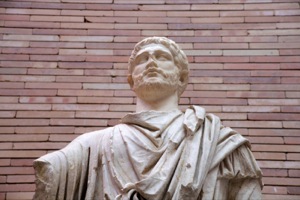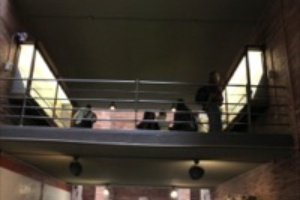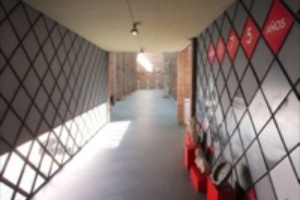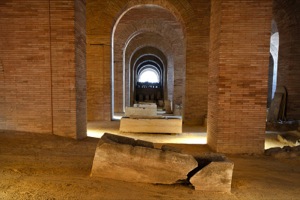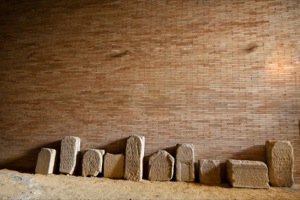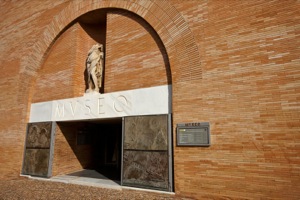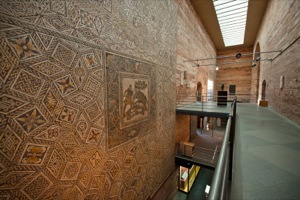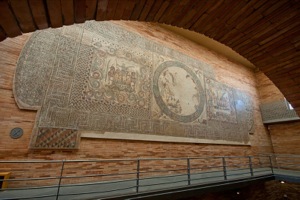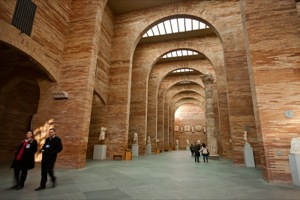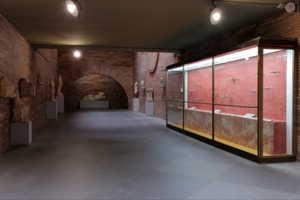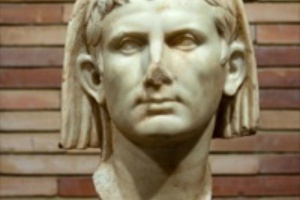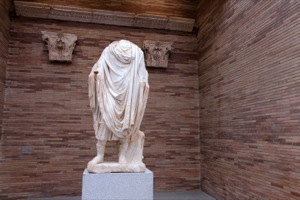Art and culture
National Roman Art Museum in Mérida
The National Roman Art Museum (MNAR) shows the visitor different sides of daily life in the province of Hispania.
- Explore
- Museo Nacional de Arte Romano, MNAR
Searching our Roman past
Location and Contact:
- Contact person: National Roman Art Museum (MNAR)
- Tel.:+34 924 31 16 90 / +34 924 31 19 12
- Fax: +34 924 30 20 06 / +34 924 38 71 05
- Website address: museoarteromano.mcu.es/
- Opening times
Tuesday-Saturday:
1 October to 31 March:
9.30am-6.30pm.1 April to 30 September:
9.30am-8pm.Sundays and public holidays:
10am-3pm.The museum is closed on Mondays throughout the year. And also on 1 January, 1 May, 24, 25 and 26 December and two local holidays.
- Fee
Normal admission: €3
Reduced admission: €1.50
Free admission: Saturday afternoons, Sunday mornings and the following days: 18 April (World Heritage Day), 18 May (International Museum Day), 12 October (Columbus Day), 6 December (Spanish Constitution Day).
-
The National Roman Art Museum (MNAR) shows the visitor different sides of daily life in the province of Hispania.
The history of this museum goes back to 16th century, when Fernando de Vera y Vargas began putting together his epigraphic collection. After various transformations during the following centuries, it was in 1975, on the occasion of the city's two-thousandth anniversary, that a decision was made to create the National Roman Art Museum – the first one outside Madrid to have the rank of "National". And in 1986, the current building was opened to shelter Mérida's archaeological objects, of which there are now thousands.
This building, planned by Rafael Moneo, is sure to quickly attract your attention as it perfectly combines modernity with the Roman nature of the city and pays tribute to classical building style with its space distribution, which you can see in its ample size, with the interior full of slim arches and zenithal illumination. The central space is used for the permanent exhibition, which you are sure to appreciate.
Ensconced in the archaeological ensemble of Mérida, which was declared UNESCO World Heritage in 1993, the MNAR works incessantly researching and spreading Roman culture, especially with reference to this city, the ancient Augusta Emerita, capital of Lusitania. The museum provides a programme of very different types of activities targeted at a variety of publics. And so, thanks to the large number of congresses, discussions, conferences, courses and exhibitions that it holds, the National Roman Art Museum has turned into an essential cultural model for Mérida since its opening.
This museum also has its own publication, the magazine Anas, and an active Friends of the Museum Association, which integrate this place into the social fabric of the city.
-
- Origin:
-
- 20th century
- Art period:
-
- Romanisation
- Name:
-
- National museum
Accessibility:
- Disabled access
- Adapted car hire
- Guide for disabled people
- Accessible facilities and common areas
- Adapted educational materials
- Access ramps
Services:
- Audioguide
- Locker and Wardrobe
- Facilities for Disabled
- Conference Room
- Shop
- Guided Tours
Theme:
- Art and culture
Gallery:
More suggestions
-

Archaeological Ensemble of Mérida
Mérida's Roman past is still very obvious from the many monuments remaining, reflecting life in one of the Empire's provincial capitals.
-
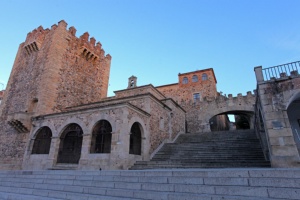
Old quarter of Caceres
The old quarter of the city of Caceres contains a wealth of Renaissance buildings, thanks to its many palaces, stately homes and Cathedral.
-
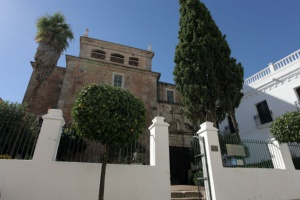
Museum of Visigoth Art and Culture
The collection of Visigoth pieces in this museum brings together relics from Mérida from the 4th-8th centuries, as the capital of the Diocesis Hispaniarum and as the metropolitan capital of the province of Lusitania
-
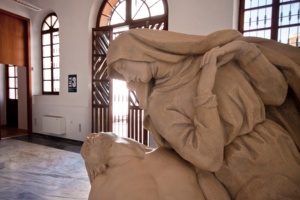
Museum of Mérida
The Museum of the Town of Mérida houses a collection on the Mérida-born sculptor and other pieces that take one on a route through the town's history.
-
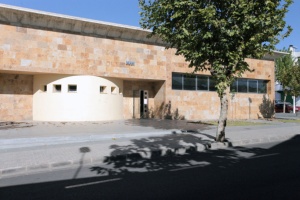
Extremadura Geology Museum
Its collection has made this museum one of the most important of its kind.
-

Museum of Visigoth Art and Culture
The collection of Visigoth pieces in this museum brings together relics from Mérida from the 4th-8th centuries, as the capital of the Diocesis Hispaniarum and as the metropolitan capital of the province of Lusitania
-
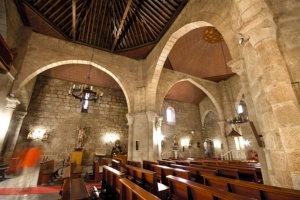
Basilica of Santa Eulalia
A space included in the archaeological complex of Mérida, and a showcase within the regional capital as it contains the town's patron.
-

Roman bridge on the Albarregas River
Built when the Roman city of Emerita Augusta was founded, the bridge on the Albarregas River is still in perfect condition and includes some of its original features.
-
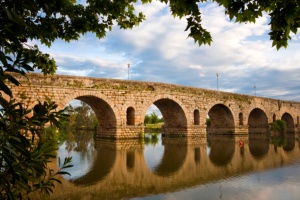
Roman bridge on the Guadiana River
In the city of Mérida, on one of the most shallow sections of the Guadiana River, we find a bridge built in the 1st century, at the same time as the foundation of Emerita Augusta. Thanks to its large size and features it is one of the most important Roman bridges in the Peninsula.
-

Remains of Roman thermae in Mérida
Without a doubt the capital of Extremadura is one of the region's enclaves with the most thermal bath constructions.
-
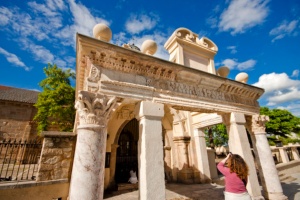
Remains of the Temple of Mars
The basilica of Santa Eulalia in Mérida contains the remains of the Roman temple of Mars in its atrium, known as "el hornito".
-
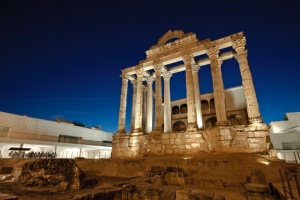
Roman Temple of Diana
It is a beautiful religious Roman building, very well preserved, that is part of Mérida's archaeological ensemble.
-
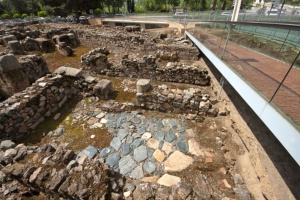
Morerías Archaeological Zone
Find out how the town of Mérida developed from Roman times to the Visigoth era.


